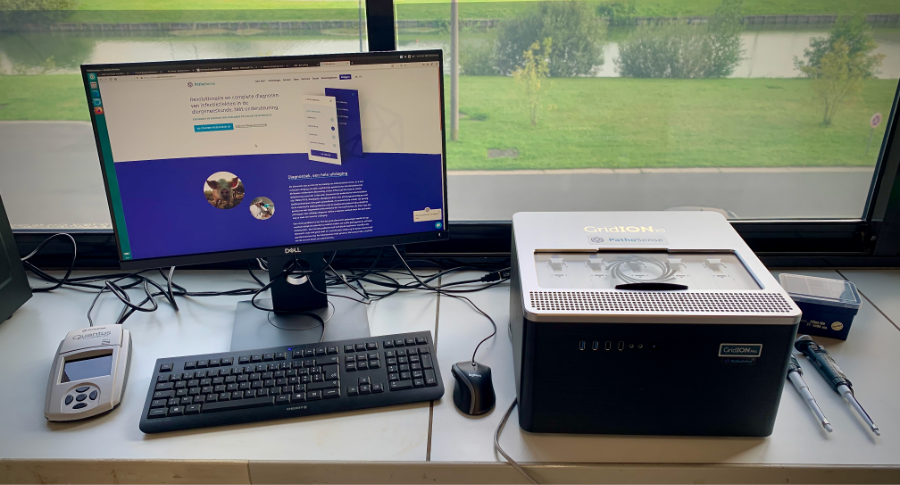Increased sequencing capacity with the ONT GridION X5
Written by Dr. Sebastiaan Theuns
PathoSense is the first laboratory to offer nanopore sequencing as a commercially available diagnostic test for infectious diseases in veterinary medicine. This allows the veterinarian to gain a broad insight into disease problems, without having to make a prior selection of which pathogens to test for. PathoSense has been analysing many samples from different animal species in the past months and is now ready for another busy end-of-the-year. To scale up our sequencing capacity, we have now equipped our laboratory with a novel state-of-the-art sequencing device: the GridION X5 from Oxford Nanopore Technologies.

The GridION is one of the state-of-the-art sequencing platforms from Oxford Nanopore Technologies that can run simultaneously 1 to 5 MinION flowcells. What does that mean? One single MinION flow cell has the capacity to sequence up to 30 gigabases or 30 billion bases over 72 hours. As an example, a Mycoplasma sp genome has a size of 1 MB. This means that one MinION flow cell could theoretically sequence this Mycoplasma sp genome 3000 times! One GridION device could sequence 15.000 times the Mycoplasma sp genome in real-time!
In real-time? Yes, in real-time. The GridION is not only a sequencing device, it is also a very strong computer with sufficient CPU, memory and storage capacity on board to perform the analysis of pathogen genomes in real-time. More importantly, it has a strong GPU (graphics processing unit) on board which allows it to convert the raw signals coming from the translocation of the nucleotides through the nanopores into accurate nucleotide sequences. This is a very demanding process and GPUs are crucial to fulfill this task in a rapid & real-time manner. With this GridION X5 in house, we are thus equipped with sufficient power to perform veterinary diagnostic analyses and R&D.
More information about the GridION on Oxford Nanopore Technologies's website